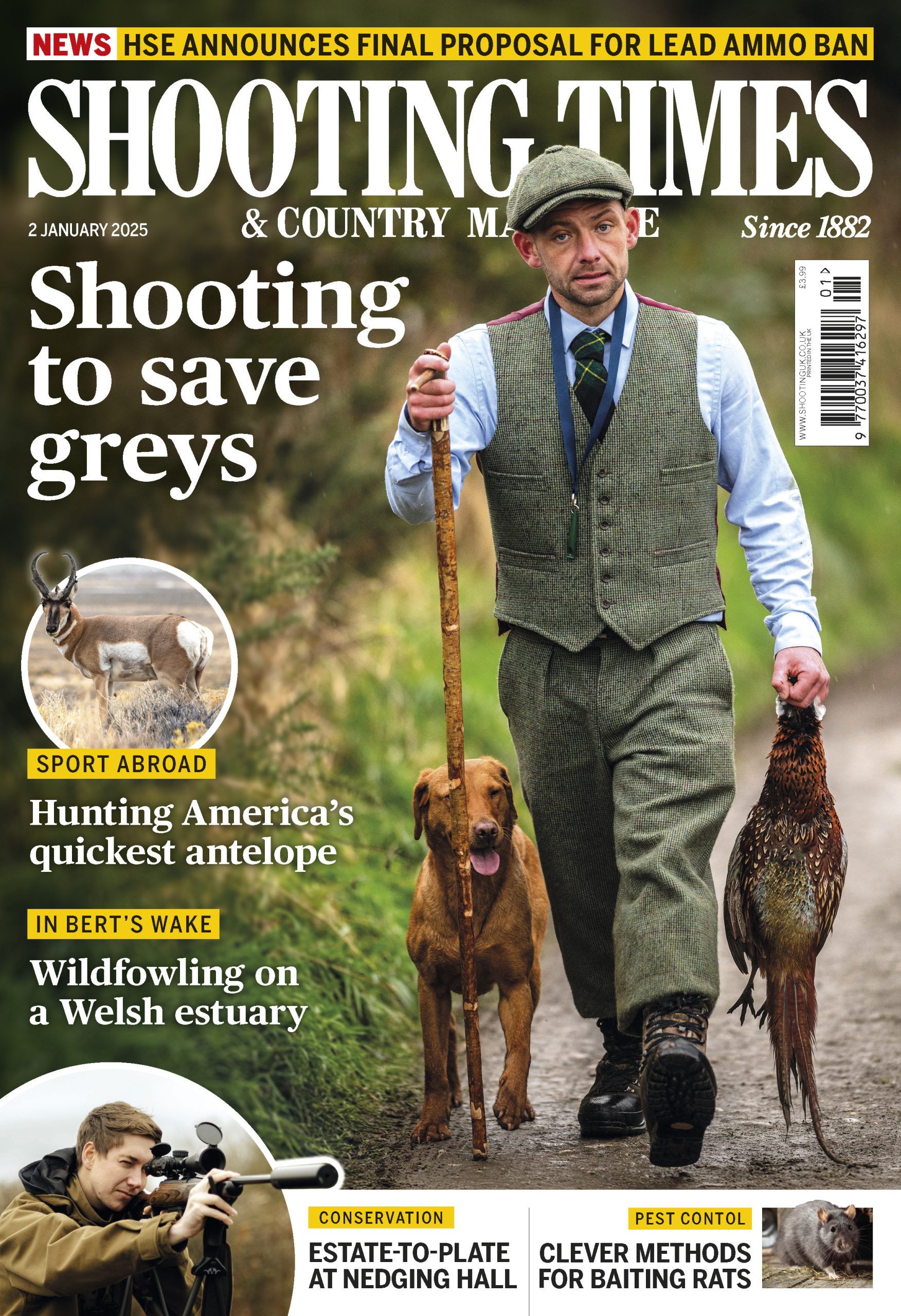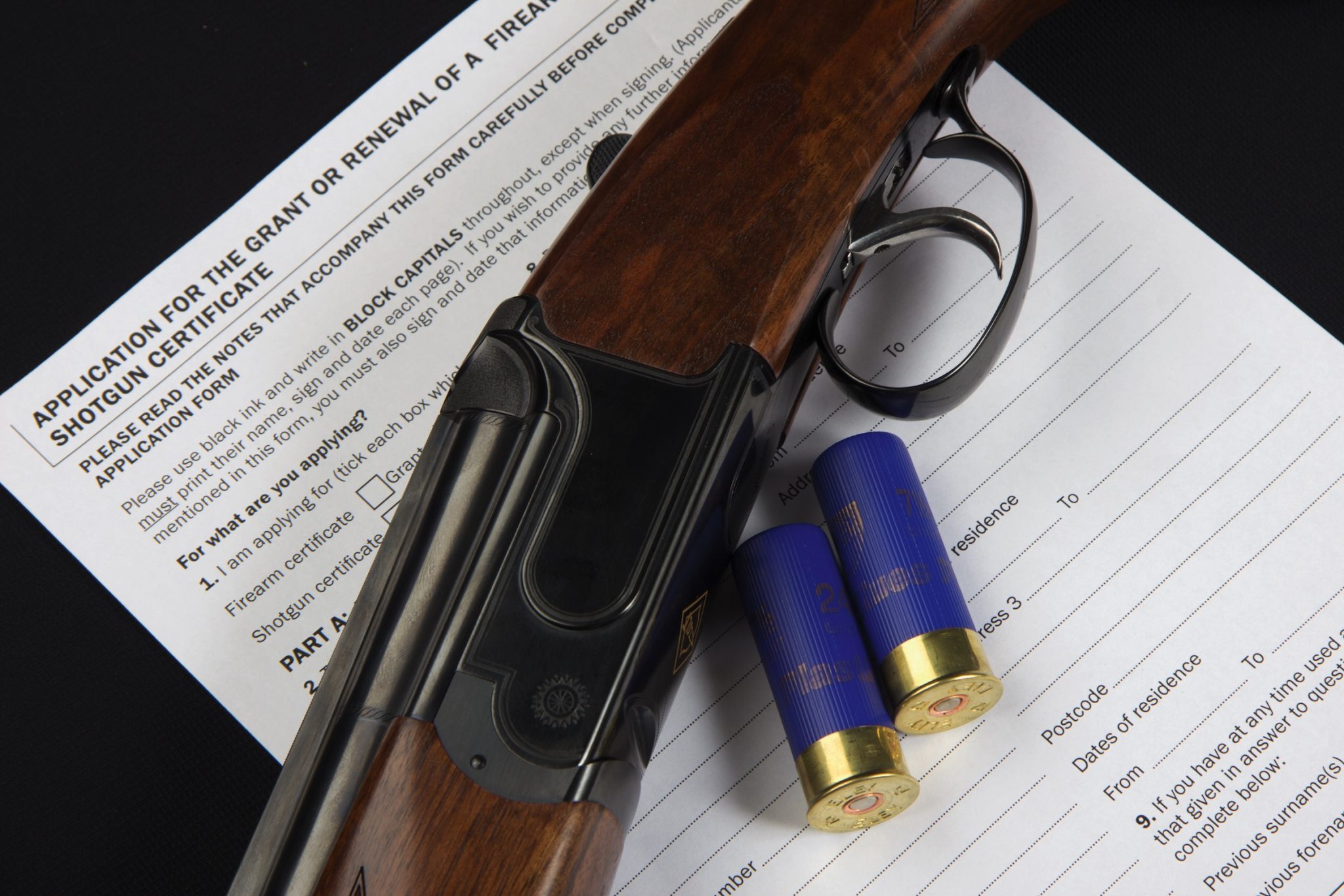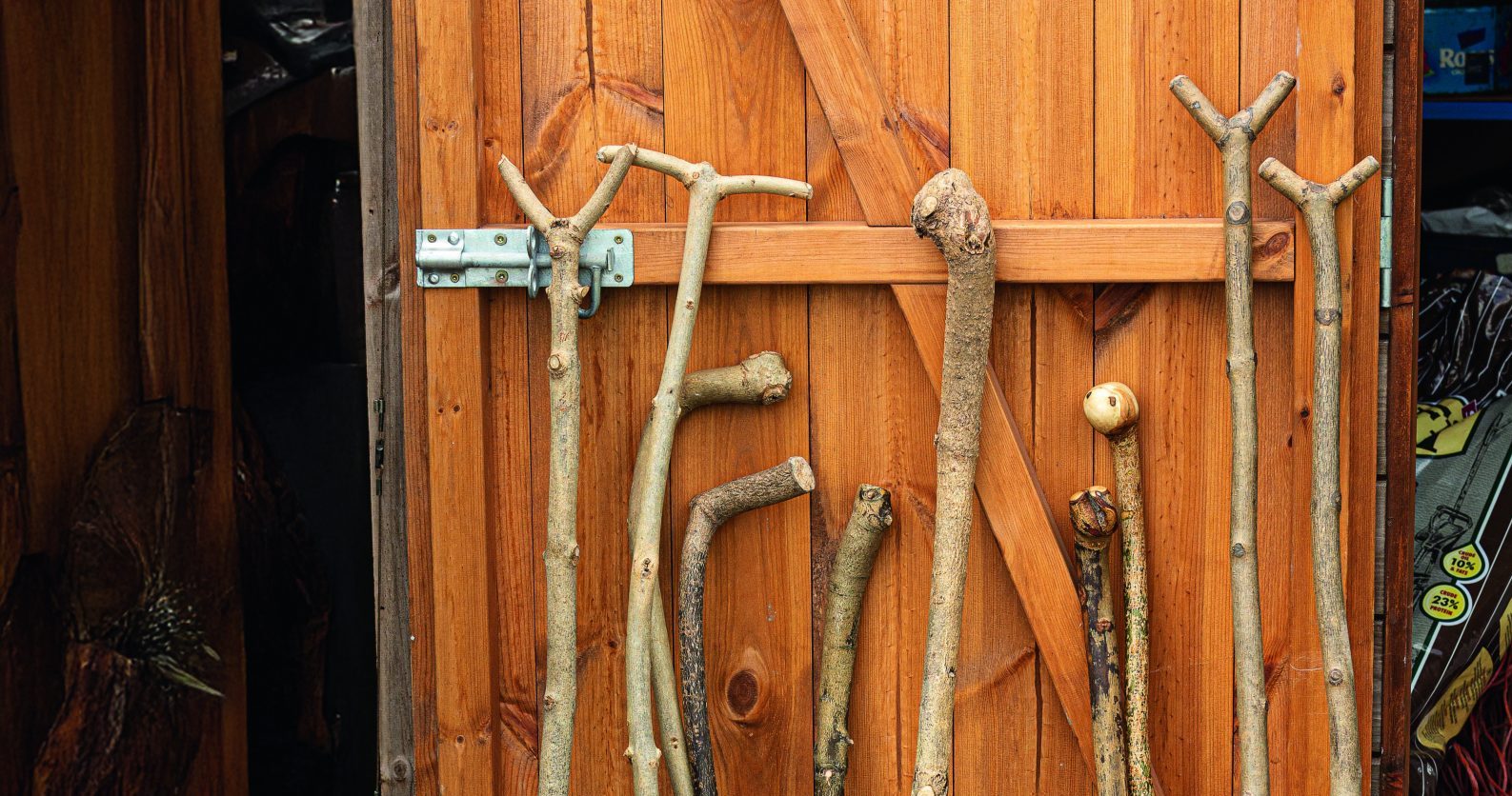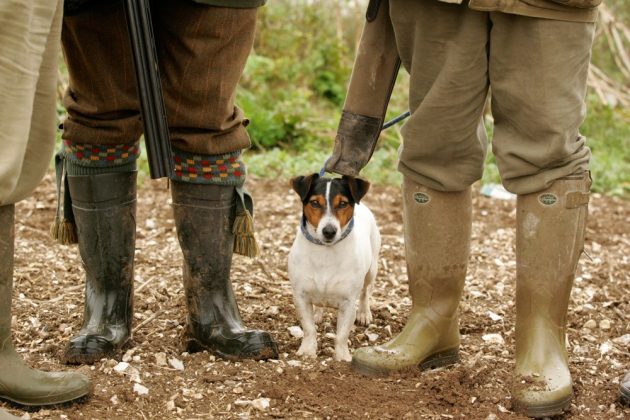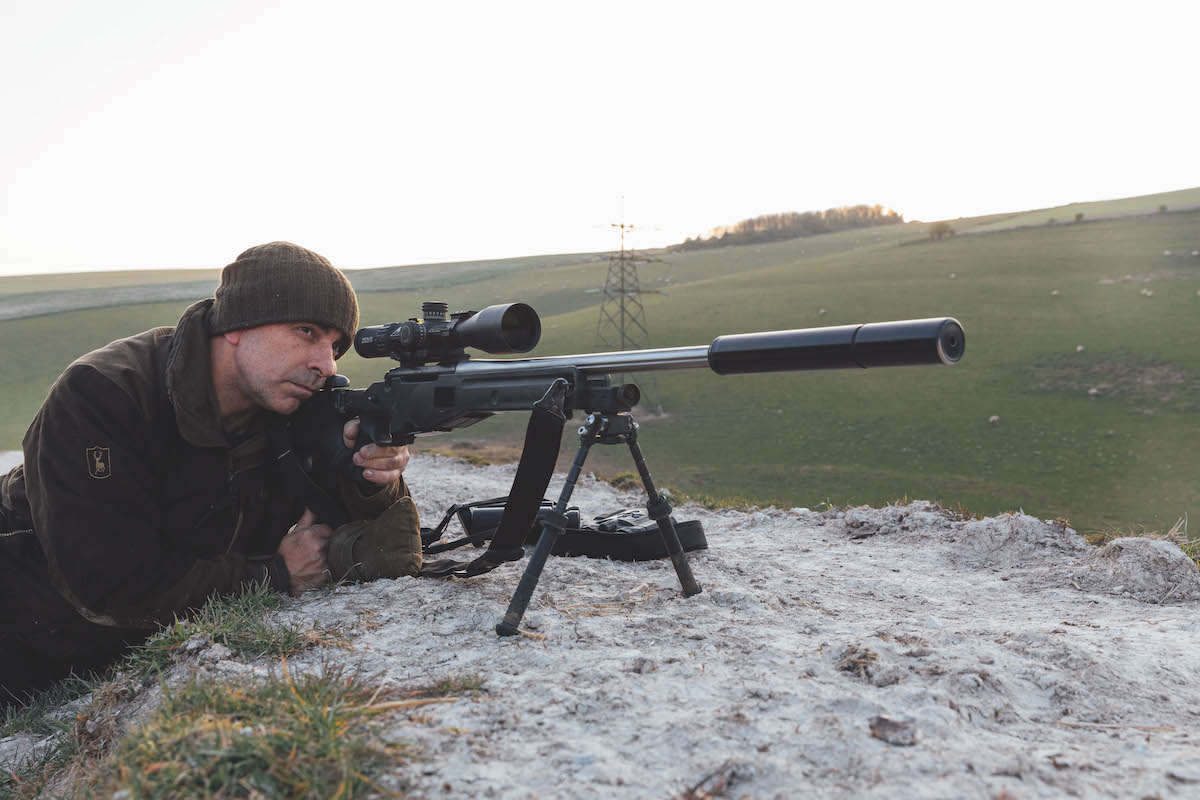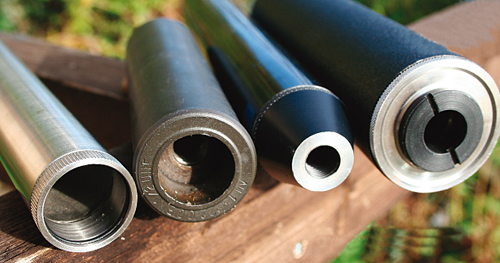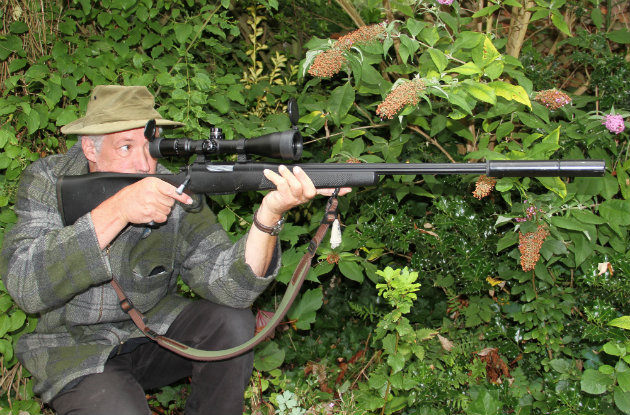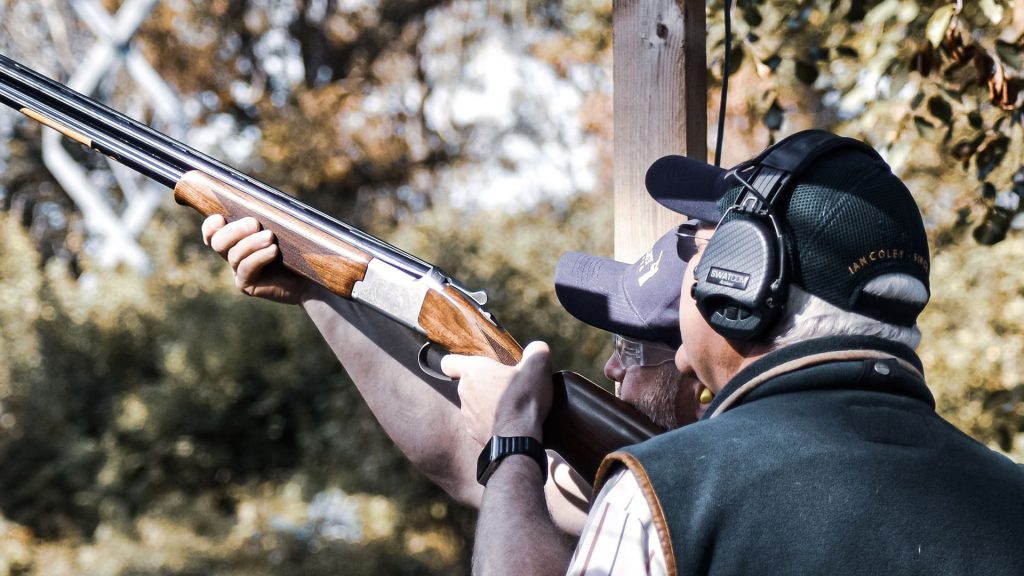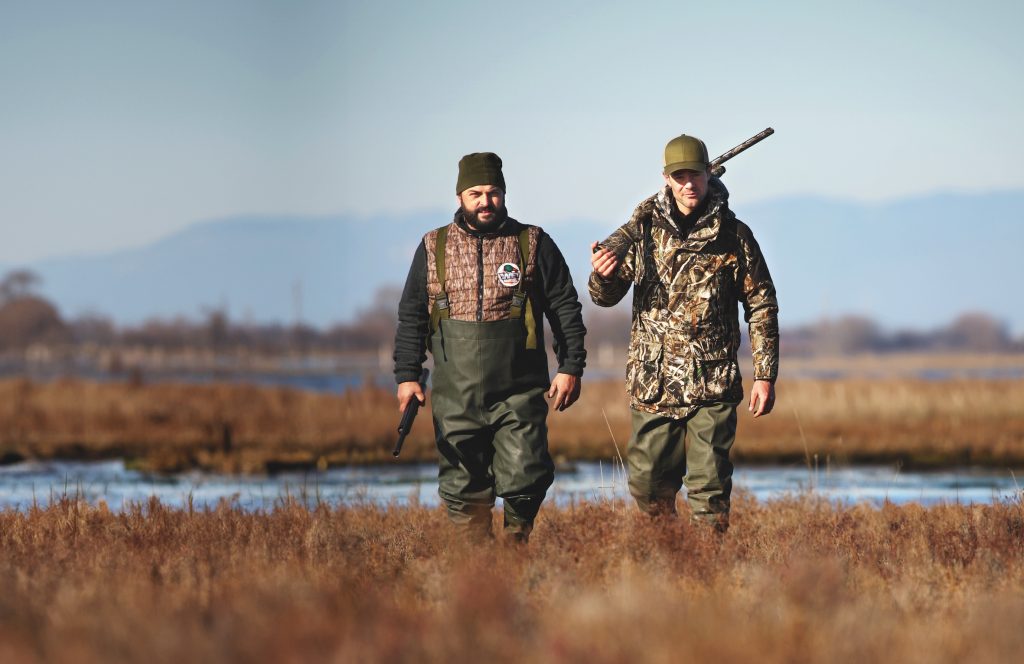How to zero your own rifle: Set up your rifle on a proper bench rest, making sure it is stable…
Win CENS ProFlex DX5 earplugs worth £1,149 – enter here
How to make your rifle shoot straight
One of the most common causes of damage to a scope is that of poorly made or misaligned scope mounts.
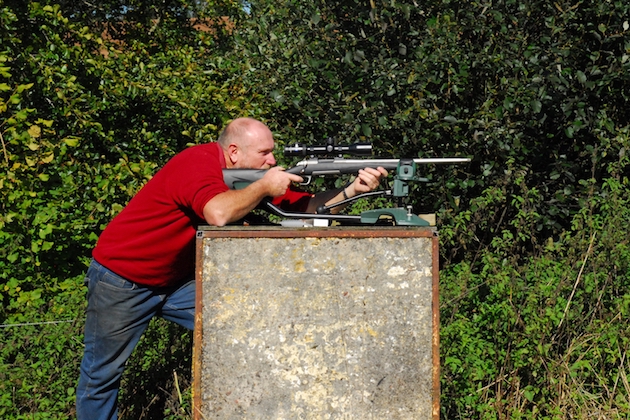 Having a stable firing point is essential ? lying on the ground with a bipod is all very well in the summer, but doing so when there?s four inches of mud on the ground is not our idea of fun! To avoid this, Paul placed a spare one ton concrete ballast block off the front of a tractor on the firing line. On top of this he uses a Caldwell precision bench rest which takes the guesswork out of the equation ? if the shots are not grouping, then there?s something wrong.
Having a stable firing point is essential ? lying on the ground with a bipod is all very well in the summer, but doing so when there?s four inches of mud on the ground is not our idea of fun! To avoid this, Paul placed a spare one ton concrete ballast block off the front of a tractor on the firing line. On top of this he uses a Caldwell precision bench rest which takes the guesswork out of the equation ? if the shots are not grouping, then there?s something wrong.
If you’ve just bought your first foxing rifle, you’ll need to get it ready to use in the field. If you bought it second-hand as a complete rig, it may already be set up but you still need to make sure it fires nicely in your hands before attempting to use it on live quarry. If you’re purchasing your rifle new, you need to establish that the sellers have your interests at heart. Taking the time to talk to other shooters about which shops are best can really pay off. Some places will do everything in their power to make sure that you leave with what you need, not what they wanted to sell you.
For starters, you will need a suitable scope fitted with the right mounts. If these are too high your accuracy will suffer and if they’re too low you can experience barrel or bolt interference problems. The scope will have been bore-sighted – this is where a special instrument is fitted to get the scope alignment close to right (you still need to range test it for fine-tuning, however). In the same vein, the moderator, sling and bipod will all fit properly, too, if you have been served well.
If your rifle is new, it’s worth putting a fair number of rounds through it on the range. This is to check that everything works correctly: the empty cases always eject nicely; the bolt handle clears the scope properly when in use; the optics are behaving as you’d expect them to, and so on.

If you buy your rifle new, it may well come with a range test card
Dry run
Some people claim that new barrels need ‘bedding in’. There are lots of claims and counterclaims on this, but it can’t hurt to empty a few magazines downrange. By doing this you can check that all of the fasteners are still tight before going hunting and ensure that everything has had a chance to settle in. The most important factor is to check that the bullets are hitting the spot where you’re aiming. Part of this involves establishing what ammo your rifle does and doesn’t like. I’m assuming at this early stage you’re not going to be reloading (one step at a time), so my suggestion is that you buy a few different brands to help you decide.
Most people set their rifles up with a 100-yard zero and until you have a good reason to do otherwise, it’s what I’d recommend. If the rifle is new, or it’s had different optics fitted, you might find that it is firing some way off from the aim point. For this reason, it’s worth using a much larger target board than might at first appear necessary, or you can waste lots of rounds trying to work out where they’re going. If you buy your rifle new, it may come with a range test card to show how it performed before it was shipped. Since the details listed specify the ammunition used – in the example shown RWS Match – you have an excellent starting point for your own zeroing.
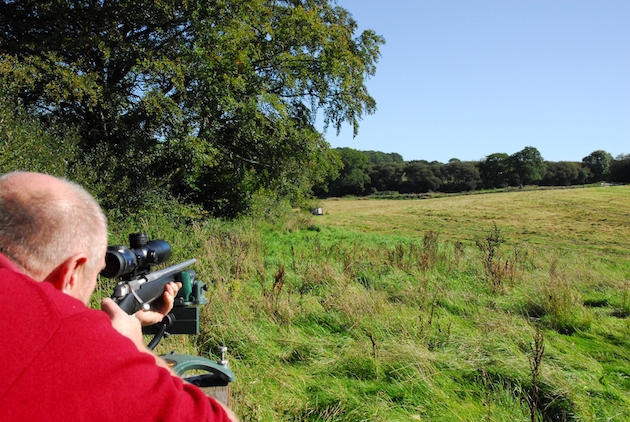
Paul aims at a target 100 yards out, the basic range
The basic range – the one Paul is aiming at – is 100 yards. Over to the right there are some hanging steel plates at 200 yards, and then a bit farther over there’s another in the shape of a fox’s head at 250 yards. Safety is paramount, so the short distance target is backed up by a couple of tons of rock and soil. The longer-range ones are situated in front of solid banks.
Having a stable firing point is essential – lying on the ground with a bipod is all very well in the summer but doing so when there’s 4in of mud is not our idea of fun. To avoid this, Paul placed a spare one-ton concrete ballast block off the front of a tractor on the firing line. On top of this he uses a Caldwell precision benchrest that takes the guesswork out of the equation; if the shots are not grouping, then there’s something wrong.
Should I remove my sound moderator after every use?
I own a .22LR CZ for rabbits and I have a Parker-Hale sound moderator fitted. Should I remove it after…
How to check your scope
As the bullet is the last thing to have contact with the barrel as it leaves and is the first…
Top tips
- A large cardboard box opened out is perfectly adequate (taken that you have a safe backstop) as a target surround since it will allow you to see where your rounds are going.
- In some cases where the scope is way off, it’s worth shooting from much closer – say 30 yards – until you’re happy with where the bullets are striking. Then move back to your 100-yard mark and fine-tune the set-up until it’s as accurate as you want it.
- If you circle any bullet strikes with a marker pen every time you check the target it can save a lot of confusion later on when you can’t decide which hole belongs to which shot.
- If you have a colleague who can watch where the rounds are going with a spotting scope it will save time.
- Some people like to fire groups of five shots at a time, whereas others (like me) think three is adequate.
- It never ceases to amaze me just how easy it is to forget which way to turn the turrets when adjusting a scope – especially when other people are watching. What doesn’t make it easier is that different manufacturers can use different markings and even directions of rotation. If you can discipline yourself to write everything down as you go, you may well save yourself some heartache and ammunition.
- It’s worth remembering that metal moves as it heats up, so if you’ve fired a lot of shots and are experiencing accuracy problems, stop and have a sandwich while the gun cools down.
- And lastly – caffeine and accuracy don’t sit comfortably together, so lay off the coffee until after you’ve finished zeroing.
Related Articles
Get the latest news delivered direct to your door
Subscribe to Shooting Times & Country
Discover the ultimate companion for field sports enthusiasts with Shooting Times & Country Magazine, the UK’s leading weekly publication that has been at the forefront of shooting culture since 1882. Subscribers gain access to expert tips, comprehensive gear reviews, seasonal advice and a vibrant community of like-minded shooters.
Save on shop price when you subscribe with weekly issues featuring in-depth articles on gundog training, exclusive member offers and access to the digital back issue library. A Shooting Times & Country subscription is more than a magazine, don’t just read about the countryside; immerse yourself in its most authoritative and engaging publication.
